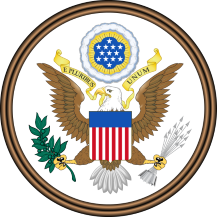United States: Government
Key Figures
- Chief of State:
- President Joseph R. Biden Jr.
- Head of Government:
- President Joseph R. Biden Jr.
Overview
- Government Name:
- United States of America
- Constitution:
- Founded: 1787, is the supreme law of the United States that addresses separation of powers into three branches, explains federalism, relationships between states as well as a bill of rights.
- Government Type:
- Federal Republic

Index of Economic Freedom
Grades each country on a scale of 0 to 100, based on ten freedoms, with 100 representing the greatest amount of economic autonomy from government intervention. Source: Heritage Foundation (2023)
Country Risk Rating
A2
The political and economic situation is good. A basically stable and efficient business environment nonetheless leaves room for improvement. Corporate default probability is low on average. Source: Coface (2025)
Government Branches
| Main Powers | Election Process | Election Cycle 1 | |
|---|---|---|---|
| Executive | Led by the president, ensures the execution of the US laws. |
Elected by an electoral college. |
4 years |
| Judicial | System of the courts, interprets and applies laws. |
Appointed by executive branch. |
Life appointment |
| Legislative | Power to pass, amend and repeal laws, ability to raise or lower taxes, create budgets and other money bills. |
Senate 100 members are elected by plurality vote, and House of Representatives 435 members are elected by plurality vote. |
Senate: 6 years; House of Representatives: 2 years |
Regional Trade Blocs
International Organization Participation [2]
Environmental Agreements [3]
Tax Information [2]
- Tax Authority:
- Internal Revenue Service
- Tax Name:
- Sales taxes and complementary use taxes are imposed and administered at the state (subnational) and local (substate) levels.
Sources:
- ElectionGuide http://www.electionguide.org/
- EY, http://www.ey.com
- CIA World Factbook, https://www.cia.gov/the-world-factbook/
- U.S. Bilateral Relations Fact Sheets http://www.state.gov/r/pa/ei/bgn/


